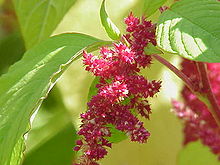 |
| Waters of Life, ©2003, H.Hunter, 11" x 15," Collage |
It was Bring Your Child to Work Day last week, a day parents working at our hospital bring along their children, in order to explore careers in healthcare. We had speakers, tours and tables all set up to teach kids about a multitude of possible futures.
My assignment was clear: meet the oncoming wave of children, 50 or so, with a quick description of what it means to be an art therapist. A Twitter dilemma if I ever saw one. (Describe what I do in 140 characters or less.) In addition, I offered them an art therapy activity.
I wanted to engage the kids, find out what they might wish to do when they grew up, recognizing any answer is a work in progress.
To that end, I had a collection of muslin dolls, ready to be drawn upon in whatever way a child's dream might dictate. Most of the children wanted to grab the doll and go (and what would you want with a naked baby doll, I ask you?) I politely let them know the talk was part of the bargain. No art, no doll.
My invitation was often initially met with a blank stare, but when I motioned them over to join other kids at a table filled with fabric markers, more colored pens began to "tatoo" muslin skins, transforming the blank "canvas" of that doll into a future self.
It was marvelous and all types of dolls emerged--nurses and doctor dolls of course, but also singers, computer geeks and pharmacists. I was so happy that the children felt that they were able to supplement the ample information that they'd heard with a chance to internalize their knowledge. Perhaps some expressed a dormant desire, a curious inclination just waiting for the opportunity to emerge.
It's taken a long time for me to lean into my future. As a child on the playground, I was often stumped when we talked about what we wanted to be when we grew up. The presumed careers for girls, teaching and nursing, did not feel right. But sitting behind the table last week, wearing a bright pink sweater and sparkly earrings, I felt I was embodying the self that had been waiting all those years ago, an artist, who uses art as medicine.










